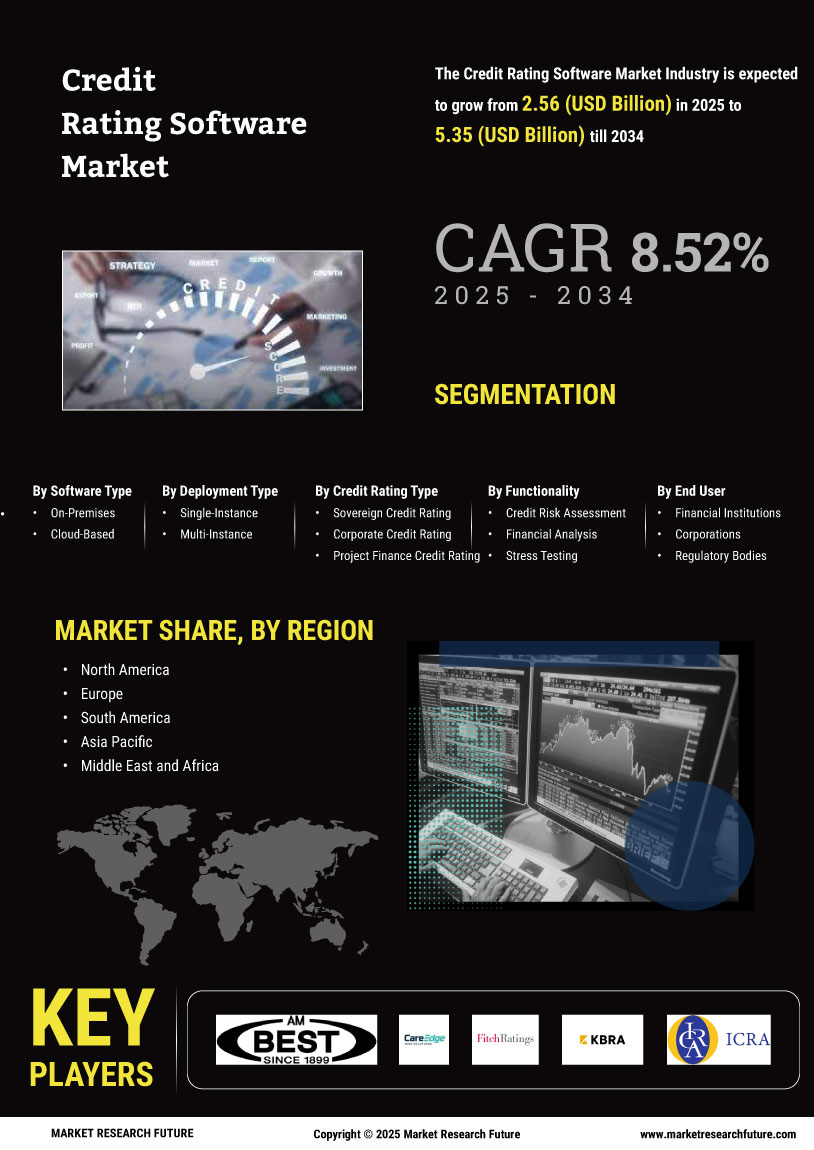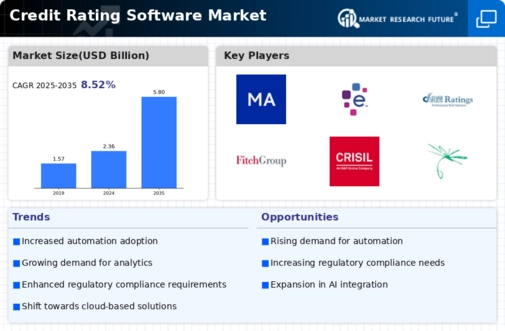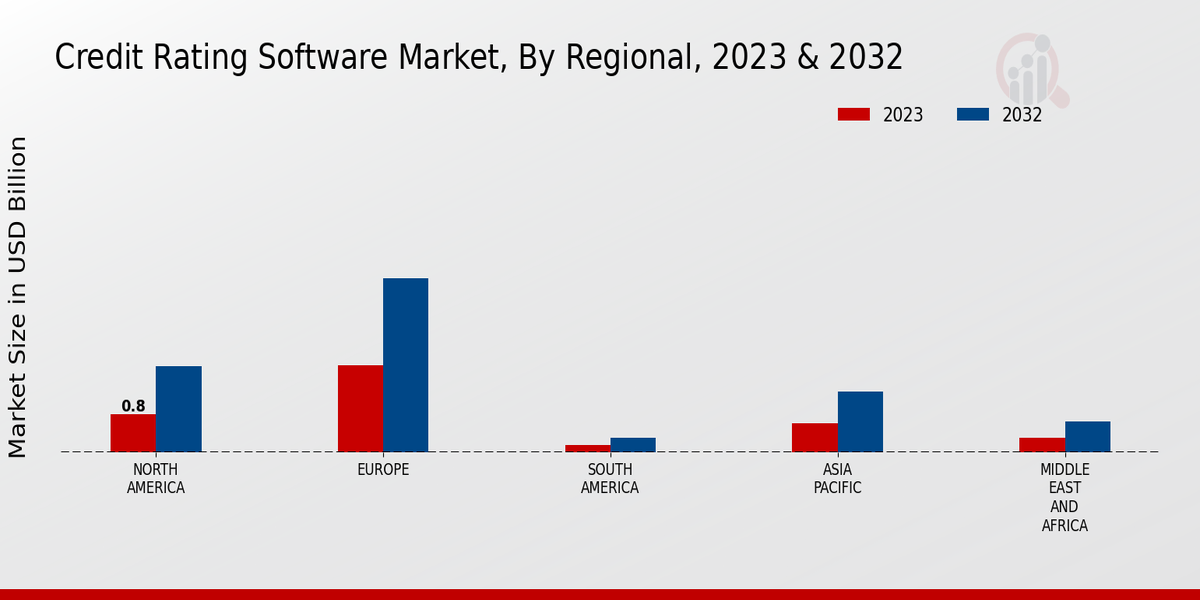Credit Rating Software Market Summary
The Global Credit Rating Software Market is projected to grow from 2.36 USD Billion in 2024 to 5.81 USD Billion by 2035, reflecting a robust CAGR of 8.53%.
Key Market Trends & Highlights
Credit Rating Software Key Trends and Highlights
- The market valuation is expected to reach 5.8 USD Billion by the year 2035.
- From 2025 to 2035, the market is anticipated to grow at a compound annual growth rate of 8.53%.
- in 2024, the market is valued at 2.36 USD Billion, indicating a strong foundation for future growth.
- Growing adoption of credit rating software due to increasing demand for financial transparency is a major market driver.
Market Size & Forecast
| 2024 Market Size | 2.36 (USD Billion) |
| 2035 Market Size | 5.81 (USD Billion) |
| CAGR (2025-2035) | 8.52% |
Major Players
Moody's Analytics, Experian, AM Best, CARE Ratings, Fitch Ratings, Kroll Bond Rating Agency, ICRA, Brickendon, Japan Credit Rating Agency, Creditsights, CRISIL, Chapman Freeborn, Leverate, DBRS Morningstar, S Global Ratings, CreditRiskMonitor



















Leave a Comment